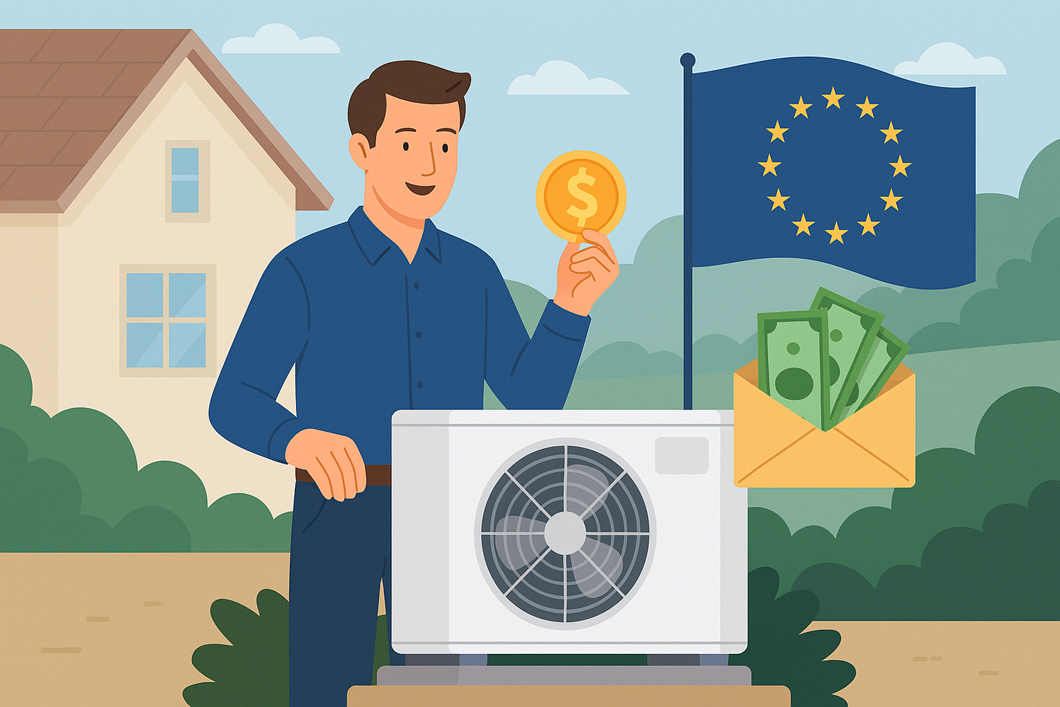
Heat Pump Refrigerant Types and Global Adoption Incentives
Classification by Refrigerants
Heat pumps are designed with a variety of refrigerants, each offering unique performance characteristics, environmental impacts, and safety considerations:
- R290 (Propane): A natural refrigerant known for outstanding energy efficiency and ultra-low Global Warming Potential (GWP) of just 3.While highly effective in both household and commercial systems, R290 is flammable and demands strict safety protocols.
- R32: Previously a favorite in residential and light commercial systems, R32 features high energy efficiency and lower pressure requirements. However, its GWP of 657 makes it less environmentally sustainable, leading to a gradual decline in its use.
- R410A: Valued for its non-flammability and robust cooling/heating capabilities under high pressure. Despite its technical reliability, R410A is being phased out due to its high GWP of 2088 and environmental concerns.
- R407C: Often selected for retrofitting older HVAC systems, R407C offers decent performance with a moderate GWP of 1774. Nevertheless, its eco-footprint is prompting a gradual market exit.
- R134A: Known for stability and suitability in industrial settings—particularly where medium-to-low temperature operation is required. Its GWP of 1430, however, is driving a shift toward greener alternatives such as R290.

Global Support for Heat Pump Adoption
-
The United Kingdom provides grants of £5,000 for air-source heat pump installations and £6,000 for ground-source systems. These subsidies apply to both new constructions and renovation projects.
-
In Norway , homeowners and developers can benefit from grants of up to €1,000 for installing ground-source heat pumps, whether in new properties or retrofits.
-
Portugal offers to reimburse up to 85% of installation costs, with a maximum limit of €2,500 (excluding VAT). This incentive applies to both newly built and existing buildings.
-
Ireland has been providing subsidies since 2021, including €3,500 for air-to-air heat pumps, and €4,500 for air-to-water or ground-source systems installed in apartments. For full-house installations combining multiple systems, a grant of up to €6,500 is available.
-
Finally, Germany offers substantial support for retrofit installations of air-source heat pumps, with subsidies ranging from €15,000 to €18,000. This program is valid through 2030, reinforcing Germany’s commitment to sustainable heating solutions.

How to Select the Perfect Heat Pump for Your Home
Choosing the right heat pump can feel overwhelming, especially with so many models and features on the market. To ensure you invest in a system that delivers comfort, efficiency, and longevity, focus on these six key considerations.
1. Match Your Climate
Not every heat pump excels in extreme temperatures. If you live in a region that regularly dips below freezing, look for a unit specifically rated for cold-climate performance. These models maintain high efficiency even when outdoor temperatures tumble, preventing frequent defrost cycles and ensuring reliable warmth all winter long.
2. Compare Efficiency Ratings
Efficiency labels tell you how much heating or cooling output you get per unit of electricity consumed.
- SEER (Seasonal Energy Efficiency Ratio) measures cooling performance.
- HSPF (Heating Seasonal Performance Factor) gauges heating efficiency.
- COP (Coefficient of Performance) indicates overall power conversion in both modes.
Higher numbers on each metric translate into lower utility bills and reduced carbon footprint.
3. Consider Noise Levels
Indoor and outdoor sound levels can make or break your living comfort—especially in tight neighborhoods or sound-sensitive commercial spaces. Look for models with low decibel ratings and sound-dampening features such as insulated compressor enclosures and vibration-reducing mounts.
4. Choose an Eco-Friendly Refrigerant
As regulations tighten and environmental awareness grows, refrigerant type is more important than ever. Natural refrigerants like R290 (propane) boast ultra-low Global Warming Potential, while many older compounds are being phased out. Prioritizing a green refrigerant not only future-proofs your investment but also helps curb greenhouse gas emissions.
5. Opt for Inverter Technology
Traditional heat pumps cycle on and off at full power, causing temperature swings and mechanical wear. Inverter-driven units, by contrast, modulate compressor speed to match demand. This continuous adjustment delivers steady comfort, reduced energy consumption, and longer equipment lifespan.
6. Right-Size Your System
An undersized pump will run nonstop, struggling to reach set temperatures, while an oversized unit will cycle frequently and fail to dehumidify properly. Conduct a detailed load calculation—factoring in your home’s square footage, insulation quality, window area, and local climate—to pinpoint the ideal capacity. For expert guidance, consult a reputable manufacturer or certified installer who can tailor recommendations to your exact needs.
By evaluating climate suitability, efficiency ratings, acoustic performance, refrigerant choice, inverter capabilities, and system sizing, you’ll be well on your way to selecting a heat pump that keeps your home comfortable, your energy bills in check, and your environmental impact to a minimum.
Contact Hien customer service to select the most suitable heat pump.
Post time: Aug-01-2025

